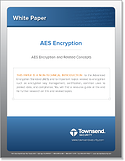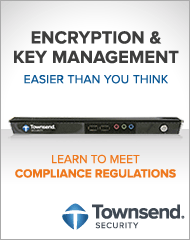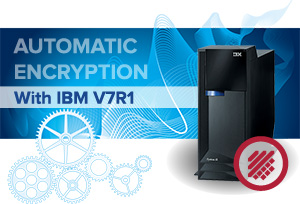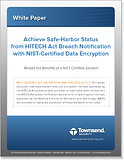AES Encryption Strategies - For the IT Executive |
The last 20 years has seen a dramatic re-alignment of the Chief Information Officer’s (CIOs) responsibilities to match the business goals of their Organizations. The modern CIO is less likely to be a pure technologist, and far more likely to be imbued with a deeper knowledge of business issues such as organizational goals, strategic alliances, bottom line financial analysis, and even with merger and acquisition strategies. In the public sector, this means that CIOs are far more aligned with political and policy goals, and not just minders of the IT infrastructure.
This has largely been good for the competitive stance of business organizations, but I think it has led to some technology blind spots. CIOs today are far more dependent on their vendors, consultants, and shrinking IT staff for guidance on security issues, and data privacy in particular. And in today’s risk environment, that may not be a good thing. Because when a data breach happens, the CIO is going to be the one on the hot seat to explain the problem and take responsibility.
And that is not a comfortable place to be. Just ask anyone who has been there.
When CIOs try to assess their data privacy stance, they often question their IT staff questions like this:
- Do we have our data protected properly?
- Is our data protected according to compliance regulations?
- What assurances do we have from software and cloud vendors that our data is protected?
Patrick Townsend recently contributed this article to OneAccord's blog. To read this article in it's entirety you can visit OneAcord's blog here. If you are ready to learn more about encryption, download our white paper "AES Encryption Strategies - A White Paper for the IT Executive."



 Townsend Security recently hosted a webinar titled “
Townsend Security recently hosted a webinar titled “




 The Health Insurance Portability and Accountability Act (HIPAA) of 1996 establishes and governs national standards for electronic health care transactions. According to the website of the U.S. Department of Health and Human Services:
The Health Insurance Portability and Accountability Act (HIPAA) of 1996 establishes and governs national standards for electronic health care transactions. According to the website of the U.S. Department of Health and Human Services: 


 The newest version of the IBM i (AS400) operating system, V7R1, brings sophisticated new security tools from IBM’s larger systems to mid-range markets. These new features allow third-party companies such as Townsend Security to offer NIST-certified automatic AES encryption, so that you can now encrypt your sensitive data without application changes!
The newest version of the IBM i (AS400) operating system, V7R1, brings sophisticated new security tools from IBM’s larger systems to mid-range markets. These new features allow third-party companies such as Townsend Security to offer NIST-certified automatic AES encryption, so that you can now encrypt your sensitive data without application changes!


 Hundreds of thousands of Medicaid recipients are up in arms about a recent security breach that saw their personal information abducted by hackers. Originally it was reported that 181,000 had their information stolen including 25,000 who actually had their social security numbers taken as well. Currently the report has been updated to a staggering 900,000 and 280,000 respectively. Over a quarter million people on Medicaid had their social security numbers exposed, and many of these victims don’t have the means to hire private investigators or attorneys to right their personal situations.
Hundreds of thousands of Medicaid recipients are up in arms about a recent security breach that saw their personal information abducted by hackers. Originally it was reported that 181,000 had their information stolen including 25,000 who actually had their social security numbers taken as well. Currently the report has been updated to a staggering 900,000 and 280,000 respectively. Over a quarter million people on Medicaid had their social security numbers exposed, and many of these victims don’t have the means to hire private investigators or attorneys to right their personal situations. 